15.11.2022
Success! NASA's tiny CAPSTONE probe arrives at the moon
CAPSTONE is the first cubesat ever to reach Earth's nearest neighbor.
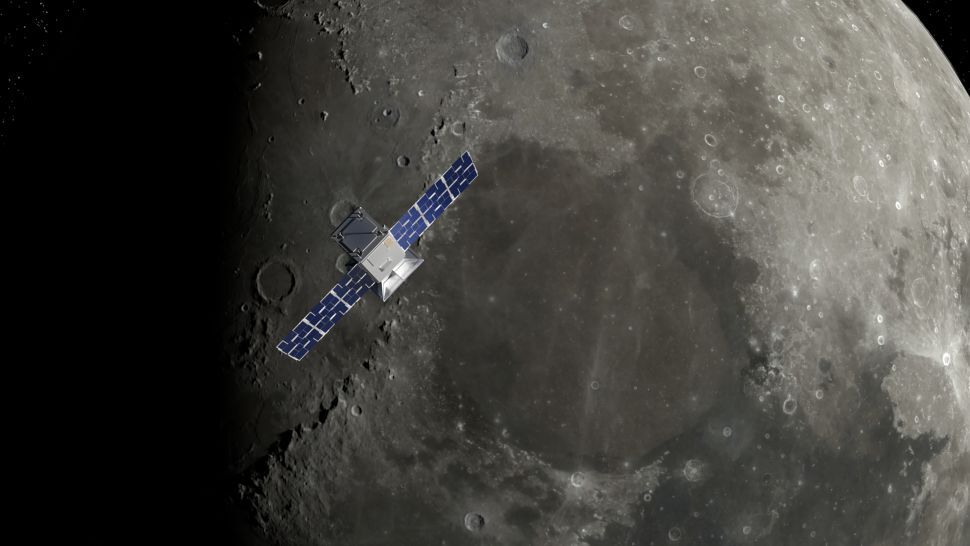
A tiny NASA spacecraft's historic trek to the moon is over.
The 55-pound (25 kilograms) CAPSTONE probe slipped into orbit around the moon on Sunday evening (Nov. 13), becoming the first cubesat ever to visit Earth's nearest neighbor.
The milestone came after a successful engine burn that ended at 7:39 p.m. EST (0039 GMT on Nov. 14), NASA officials said in a brief update(opens in new tab).
The maneuver put CAPSTONE (short for "Cislunar Autonomous Positioning System Technology Operations and Navigation Experiment") into a near-rectilinear halo orbit (NRHO) around the moon, a highly elliptical path that will also be occupied by NASA's Gateway space station.
NASA plans to launch the first pieces of Gateway, a crucial part of its Artemis program of moon exploration, in 2024. But the agency wants to learn more about lunar NRHOs first, and that's where CAPSTONE comes in: The microwave-oven-sized spacecraft will verify the suspected stability of this orbit, which a spacecraft has never flown in before, during a mission designed to last at least six months.
CAPSTONE will also perform some communication and navigation tests, some of them in concert with NASA's Lunar Reconnaissance Orbiter, which has been looping around the moon since 2009.
CAPSTONE isn't ready to get to work just yet, however; it still needs to fine-tune its path around the moon.
"Two smaller correction maneuvers will take place this week to ensure the spacecraft is confirmed into the complex lunar orbit," representatives of the Colorado company Advanced Space, which owns CAPSTONE and operates the cubesat for NASA, wrote in an update Sunday night(opens in new tab).
CAPSTONE's path to lunar orbit was a bit bumpy. The probe launched atop a Rocket Lab Electron booster on June 28, kicking off a circuitous, highly fuel-efficient 4.5-month-long trek that followed gravitational contours.
The CAPSTONE team lost contact with the probe on July 4, just after it separated from Rocket Lab's Photon spacecraft bus. They quickly identified and fixed the problem, an improperly formatted command, getting CAPSTONE back on track the next day.
CAPSTONE ran into more trouble two months later. The probe suffered a glitch during a trajectory-correcting engine burn on Sept. 8; it began to tumble and went into a protective safe mode as a result.
The mission team traced this problem to a wonky valve in CAPSTONE's propulsion system, troubleshot it, and got the probe back on course for its historic lunar arrival.
Other cubesats will soon follow in CAPSTONE's footsteps, if all goes according to plan. NASA's Artemis 1 moon mission is scheduled to launch on Nov. 16, sending the agency's Orion capsule on an uncrewed shakeout cruise to lunar orbit. Artemis 1 will also loft 10 ride-along cubesats, some of which will study the moon.
One of those little craft, Japan's OMOTENASHI ("Outstanding Moon exploration Technologies demonstrated by Nano Semi-Hard Impactor"), will even put a tiny lander down on the moon.
Though CAPSTONE is a lunar trailblazer, it isn't the first cubesat to go beyond Earth orbit. That distinction goes to NASA's MarCO-A and MarCO-B probes, also known as Wall-E and Eva, which launched with the agency's InSight Mars lander in May 2018. The two cubesats helped beam home data during InSight's Red Planet touchdown six months later and also managed to photograph Mars.
Quelle: SC
----
Update: 23.11.2022
.
CAPSTONE Forges New Path for NASA’s Future Artemis Moon Missions
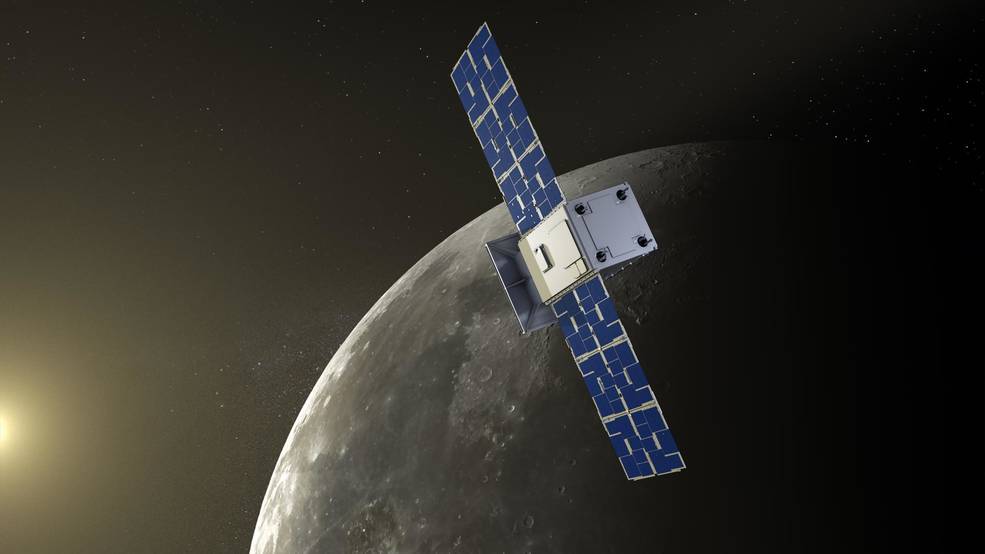
NASA's CAPSTONE spacecraft has completed final maneuvers to place it in its target orbit around the Moon, refining its path in the orbit it arrived to last week.
The spacecraft now is in the operational phase of its pathfinding mission, during which it will test an orbit key to future Artemis missions and demonstrate new technologies for spacecraft operating near the Moon.
“NASA’s partnership with Advanced Space on CAPSTONE is enabling NASA to gain critical, additional capabilities at a lower cost,” said NASA Administrator Bill Nelson. “CAPSTONE is part of our new era of human exploration at the Moon, testing the unique orbit planned for the Gateway lunar space station.”
CAPSTONE – short for Cislunar Autonomous Positioning System Technology Operations and Navigation Experiment – is a technology demonstration, designed to prove the reliability of new capabilities so that they can be used in future missions. CAPSTONE is the first spacecraft to fly in a near-rectilinear halo orbit (NRHO) and the first CubeSat to operate at the Moon. This orbit is the same planned for Gateway, an upcoming Moon-orbiting space station that will support NASA's Artemis missions. CAPSTONE will gather data on this orbit for at least six months to support Gateway's operational planning.
"Missions like CAPSTONE allow us to reduce risk for future spacecraft, giving us a chance to test our understanding and demonstrate technologies we intend to use in the future," said Jim Reuter, associate administrator for NASA's Space Technology Mission Directorate. "Partnering with innovative U.S. companies, including several small businesses, on CAPSTONE has given us the chance to forge new ground, merging commercial interests with NASA's goals."
CAPSTONE took a four-month journey from launch to orbit – overcoming challenges related to communications and propulsion along the way – and performed an initial orbit insertion maneuver on Nov. 13. In the following days, the CAPSTONE mission operations team, led by Advanced Space of Westminster, Colorado, analyzed data from the spacecraft to confirm it was in the expected orbit and carried out two clean-up maneuvers to refine its track.
In addition to studying this unique orbit, CAPSTONE's mission also includes two technology demonstrations that could be used by future spacecraft. The Cislunar Autonomous Positioning System, or CAPS, is a navigational software developed by Advanced Space that would allow spacecraft operating near the Moon to determine their position in space without relying exclusively on tracking from Earth. CAPSTONE will demonstrate this technology by communicating directly with NASA's Lunar Reconnaissance Orbiter, which has been in orbit around the Moon since 2009. CAPSTONE will also demonstrate one-way ranging using a chip-scale atomic clock, which could allow spacecraft to determine their position in space without the need for a dedicated downlink to ground stations.
"We have been working to this point since we started the company over 11 years ago. Getting into this orbit at the Moon validates so much hard work and grit by the combined CAPSTONE mission operations team," said Bradley Cheetham, principal investigator for CAPSTONE and chief executive officer of Advanced Space. "The capabilities we have demonstrated and the technologies still to be matured will support future missions for decades to come."
CAPSTONE launched June 28, 2022, aboard a Rocket Lab Electron rocket from Mahia, New Zealand. After launch, a Photon upper stage raised CAPSTONE's orbit and injected the spacecraft into its ballistic lunar transfer, a long but fuel-efficient trajectory that carried the spacecraft to the Moon over the course of more than four months.
CAPSTONE is commercially owned and operated by Advanced Space. It represents an innovative collaboration between NASA and industry to provide rapid results and feedback to inform future exploration and science missions. The spacecraft was designed and built by Terran Orbital. Operations are performed jointly by teams at Advanced Space and Terran Orbital. The mission is also supported by Stellar Exploration, Space Dynamics Laboratory, Orion Space Solutions, Tethers Unlimited, Inc., and Morehead State University.
NASA’s Small Spacecraft Technology program within the agency’s Space Technology Mission Directorate (STMD) funds the demonstration mission. The program is based at NASA’s Ames Research Center in California’s Silicon Valley. The development of CAPSTONE’s navigation technology is supported by NASA’s Small Business Innovation Research and Small Business Technology Transfer (SBIR/STTR) program, also within STMD. The Artemis Campaign Development Division within NASA’s Exploration Systems Development Mission Directorate funded the launch and supports mission operations.
Quelle: NASA
----
Update: 11.02.2023
.
Lunar cubesats encounter technical problems
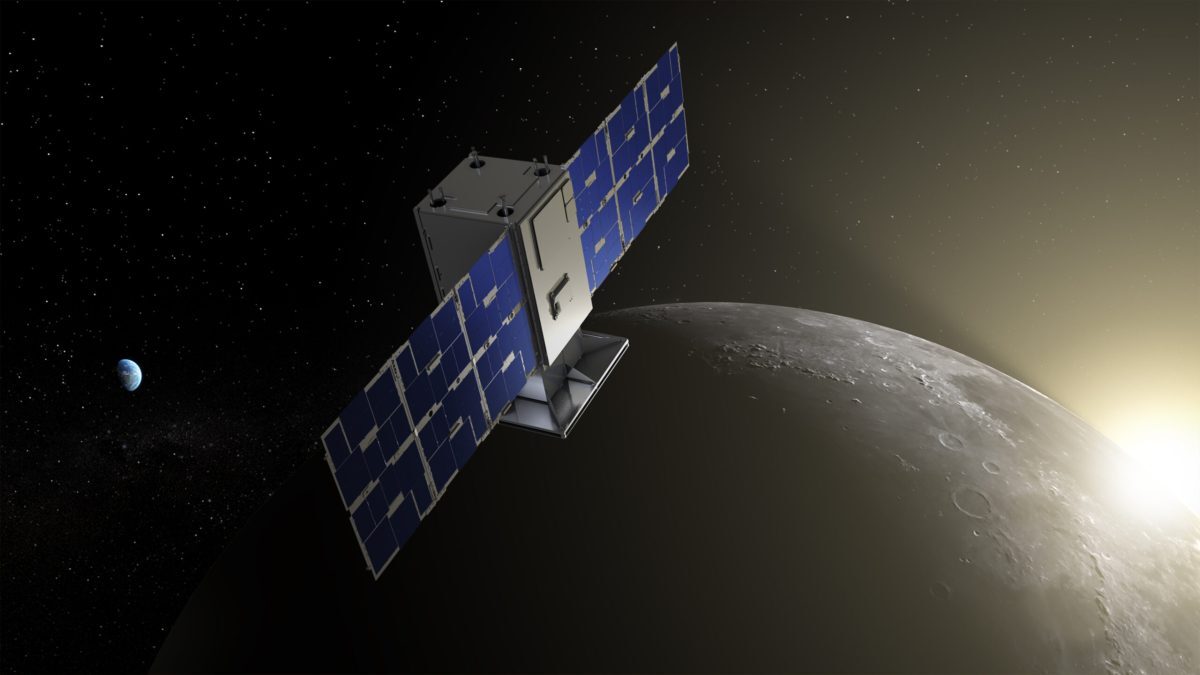
WASHINGTON — One NASA-funded lunar cubesat has recovered from a communications glitch while engineers are developing backup plans for another cubesat that has suffered a propulsion problem.
NASA announced Feb. 8 that controllers had restored the ability to send commands to the Cislunar Autonomous Positioning System Technology Operations and Navigation Experiment (CAPSTONE) cubesat. That cubesat, operated by Colorado-based Advanced Space for NASA, has been orbiting the moon since November in a near-rectilinear halo orbit, the same orbit planned for the lunar Gateway.
The spacecraft had been unable to receive commands since Jan. 26, although it was otherwise functioning and transmitting telemetry back to Earth. The onboard computer rebooted Feb. 6 when triggered by a command-loss timer, restoring two-way communications. NASA did not disclose what kept the spacecraft from receiving commands.
Other than the communications issue, CAPSTONE has been working well since arriving at the moon, completing more than 12 orbits. The spacecraft has only had to perform maneuvers twice to maintain its orbit, compared to expectations that such maneuvers would be required every orbit.
In addition to testing the stability of the near-rectilinear halo orbit, satellite operators attempted a test of its autonomous positioning system with another spacecraft in lunar orbit, NASA’s Lunar Reconnaissance Orbiter (LRO). In that Jan. 18 crosslink test, LRO received a signal from CAPSTONE, but CAPSTONE did not collect ranging measurements from the returned signal required for the navigation measurements. Additional crosslink tests are planned.
The CAPSTONE team has worked through several issues since the spacecraft’s launch in June, including a communications outage shortly after separation from its Lunar Photon kick stage and an attitude control problem caused by a malfunctioning thruster in September. Spacecraft engineers were able to overcome those problems, leading to a successful orbital insertion in November.
“We’ve learned a tremendous amount with just a small, 12U cubesat on the way to the moon that is informing other programs,” said Brad Cheetham, chief executive of Advanced Space, during a panel at the Federal Aviation Administration Commercial Space Transportation Conference Feb. 9.
Another lunar-bound cubesat, though, is still struggling with a propulsion problem. NASA’s Lunar Flashlight cubesat launched Dec. 9 as a secondary payload on the Falcon 9 launch of a commercial lunar lander by Japanese company ispace. A month later, NASA reported that the cubesat’s thrusters were underperforming, which threatened the spacecraft’s ability to enter a near-rectilinear halo orbit.
NASA said Feb. 8 that efforts to fix the problem, including using one fully functioning thruster to adjust its trajectory, were unsuccessful. NASA said that one thruster suffered a “rapid loss of performance” after a series of maneuvers, leading engineers to conclude that the spacecraft does not have the ability to enter lunar orbit.
The mission team will try an alternative approach to achieve the science goals of the mission, which involve flying over the south pole of the moon and using lasers to look for evidence of water ice deposits there. Engineers will attempt to maneuver the spacecraft into a very high Earth orbit that will allow flybys of the south pole of the moon once a month. Those flybys could begin as soon as June.
Other systems on Lunar Flashlight are working well, NASA said. That included recent tests of its laser reflectometer instrument.
Quelle: SN
----
Update: 23.04.2023
.
CAPSTONE Mission: 17 April 2023 Update
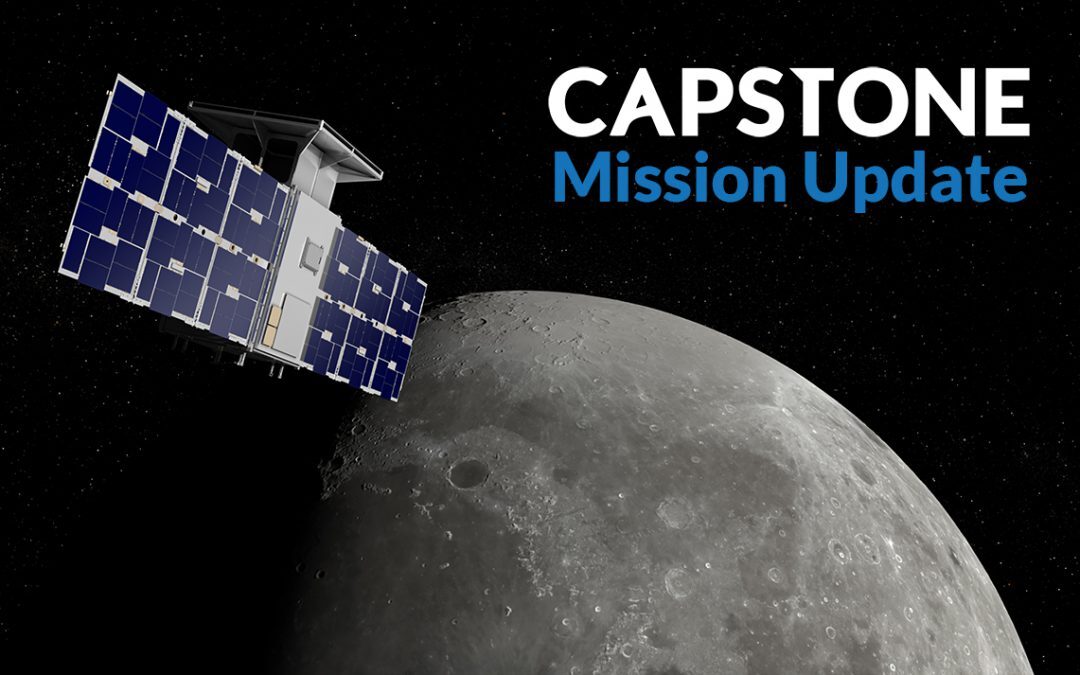
The CAPSTONE Mission Team has been busy continuing to operate the mission in its planned Near Rectilinear Halo Orbit (NRHO). Thus far, since performing the NRHO insertion maneuver on November 13th, 2022, the spacecraft has spent 154 days operating in the NRHO completing 23 NRHO revolutions. During this time, the mission team has maintained knowledge of the spacecraft state well within the mission requirements using ground-based navigation tools and tracking measurements collected by the Deep Space Network including DSS-17 which is an affiliated site at Morehead State University in Kentucky. This navigation information has continued to support the design and execution of required maneuvers to maintain the orbit. Minimum maneuver size constraints have been sequentially reduced as the combined mission operations teams at Advanced Space, Terran Orbital, and Stellar Exploration continue to mitigate issues with a thruster valve. Since entering the NRHO the spacecraft has executed six Orbit Maintenance Maneuvers (OMM) using approximately 1.8 m/s of fuel. Although the mission plan was originally to do a maneuver every NRHO (approximately once a week), the higher burn threshold has reduced the number of maneuvers performed while also demonstrating the robustness of the stationkeeping strategy utilized by the mission which is the same strategy planned for the Lunar Gateway.
As we have been operating at the Moon, we have continued to learn and improve. Due to suspected radiation impacts likely caused by increased Solar activity, the system has been tested and continues to demonstrate resilience in the face of challenges. As designed, the system has tolerance for radiation impacts and the flight system performs checks to identify and resolve issues caused by single event upsets or other onboard avionics issues. This design work has been repeatedly validated over the past couple of months.
The mission team recently traveled to NASA’s Johnson Space Center to provide lessons learned and as-flown information to teams including the Gateway program, Artemis program, and several other groups. Over three days of presentations and discussions, over 300 people were involved in these meetings with attendees including NASA engineering, operations, contractors, and international partners. These exchanges focused on information sharing consistent with two of the CAPSTONE mission objectives related to demonstration of NRHO operations and informing future lunar exploration requirements and operations. In this way, CAPSTONE has continued to serve future NASA programs as a pathfinder.
Payload commissioning and evaluation has continued over the past couple of months. Specifically, the payload imager has been activated and taken its first set of pictures. The team will be working to improve imager performance and configuration in the coming weeks. This payload component will be used to generate publicly releasable imagery as well as to support technology demonstration efforts during future phases of the mission.
The mission team has continued to work on the crosslink demonstration in collaboration with the Lunar Reconnaissance Orbiter (LRO) mission operations team at NASA’s Goddard Space Flight Center. Software updates after the first attempt in January were developed and deployed. Further challenges were encountered with software updates in March and subsequently patched. On April 7th, the relative positioning of the CAPSTONE and LRO spacecraft were favorable for a crosslink at a much-reduced range compared to previous attempts. Data collected by the LRO spacecraft demonstrated a strong signal and performance consistent with signal lock from LRO on the CAPSTONE generated signal. CAPSTONE telemetry indicates that the crosslink signal was returned to the spacecraft. The mission team is currently working to process telemetry and identify if the crosslink measurements were collected as expected. This demonstration significantly improves on the observed performance from prior attempts. Coordinating this crosslink demonstration has provided significant lessons learned related to interdependent operations between spacecraft during phases of flight with high relative dynamics between two spacecraft at the Moon. As CAPSTONE traverses its closest approach to the Moon, and thus its closest approach to LRO, the limitations of antenna slew rates prevent some crosslink opportunities from being attempted. These design and operational lessons learned are being captured to support future crosslink activities at the Moon.
In the coming weeks a software update will be provided to the satellite that enables switching of the primary radio communications firmware. This radio firmware change will expose the functionality to begin demonstration of the CSAC enabled one-way uplink ranging. In collaboration with JPL and the Deep Space Network, this demonstration will deliver a second data type to the Cislunar Autonomous Positioning System (CAPS). The CAPS flight software, developed by Advanced Space, has been demonstrated on the CAPSTONE flight computer and is awaiting new data types for further demonstration. This future activity will further enhance the maturity of CAPS and provide future missions with onboard knowledge of the state to enable autonomy in other spacecraft functions.
The mission is approaching the end of its 6-month primary mission in May. At that point, the mission will transition to an enhanced mission phase for 12 months. During the enhanced mission, the team will focus on continued demonstration of technology and operations objectives while also evaluating opportunities for further automation and experimentation. After this 12 month enhanced mission, the program has disposal plans consistent with US and NASA policy. The spacecraft will have significant fuel reserves remaining and may consider additional operations if systems remain operational.
About CAPSTONE™: CAPSTONE Press Kit
CAPSTONE™ is owned and operated by Advanced Space. It is one of the first CubeSats to fly in cislunar space – the orbital area near and around the Moon – and demonstrate an innovative spacecraft-to-spacecraft navigation technology. The mission launched on June 28, 2022. Critical partners in the CAPSTONE mission include:
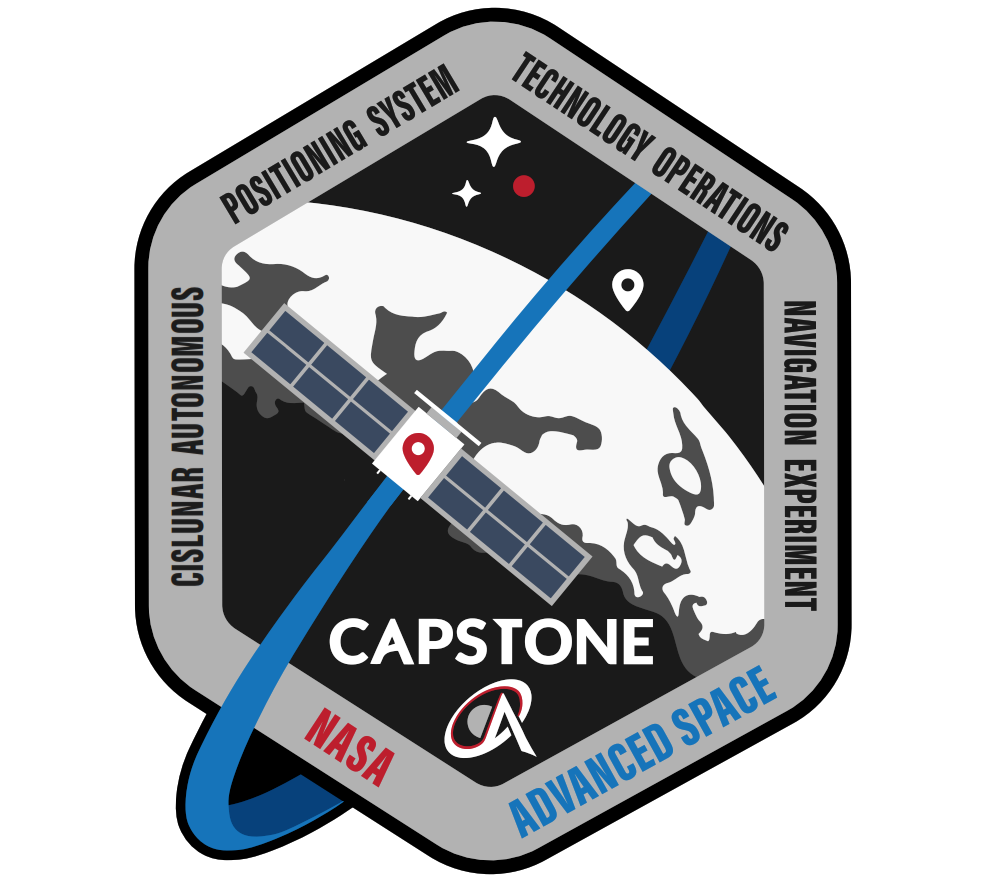
-
- NASA: CAPSTONE’s development is supported by the Space Technology Mission Directorate via the Small Spacecraft Technology and Small Business Innovation Research programs at NASA’s Ames Research Center in California’s Silicon Valley. The Artemis Campaign Development Division within NASA’s Exploration Systems Development Mission Directorate supported the launch and mission operations. NASA’s Launch Services Program at Kennedy Space Center in Florida was responsible for launch management. NASA’s Jet Propulsion Laboratory supported the communication, tracking, and telemetry downlink via NASA’s Deep Space Network, Iris radio design and groundbreaking 1-way navigation algorithms.
- Terran Orbital Corporation: Spacecraft design, development and implementation, hardware manufacturing, assembly, testing and mission operations support.
- Stellar Exploration: Propulsion subsystem provider.
- Rocket Lab USA, Inc.: Launch provider for CAPSTONE on a three-stage Electron launch vehicle.
- Space Dynamics Lab (SDL): Iris radio and navigation firmware provider.
- Orion Space Solutions (formerly Astra): Chip Scale Atomic Clock (CSAC) hardware provider necessary for the 1-way ranging experiment.
- Tethers Unlimited, Inc.: Cross Link radio provider.
- Morehead State University (MSU): Operates the newest “affiliated node” on the NASA Deep Space Network (DSN). Providing telemetry, tracking and control services for NASA and commercial space missions and to engage university students in deep space mission operations.
Quelle: Advanced Space, LLC
----
Update: 20.05.2023
.
CAPSTONE Takes Moon Shot, Successfully Tests Navigation Technology
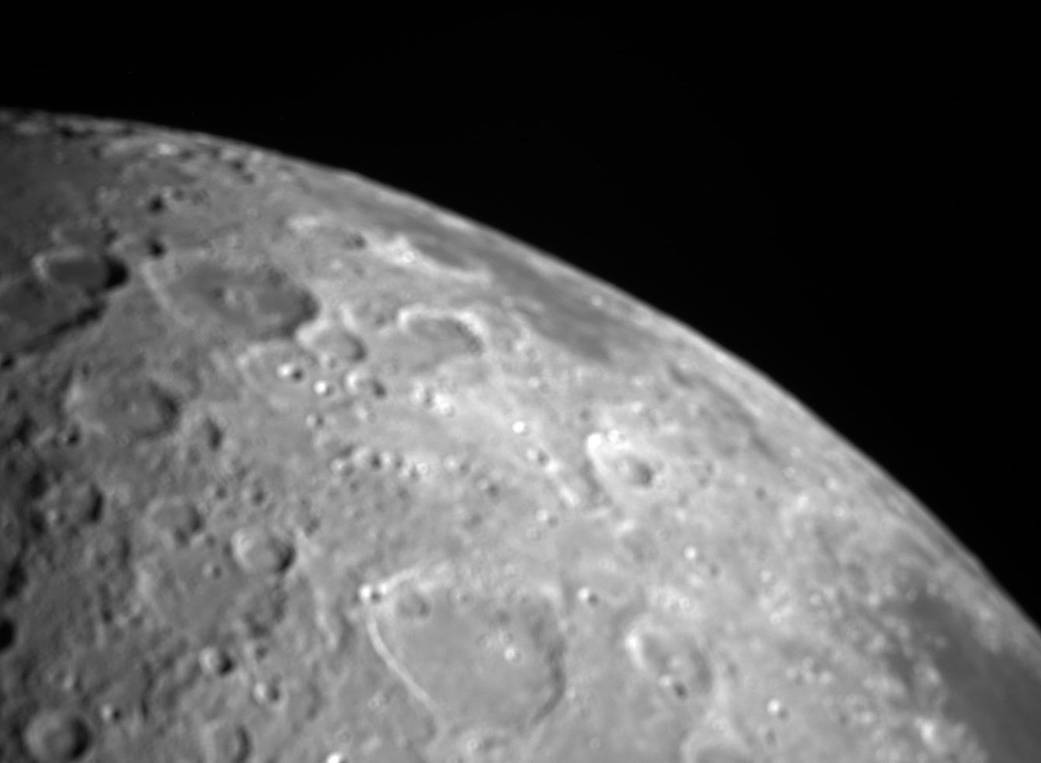
CAPSTONE successfully tested a navigation technology akin to Earth’s GPS for the first time in May, advancing a capability that could help future space missions more efficiently navigate at the Moon. The spacecraft also captured its first images of the Moon, showing the lunar surface near the Moon's North Pole as CAPSTONE made a close approach to the Moon on May 3.
CAPSTONE, short for Cislunar Autonomous Positioning System Technology Operations and Navigation Experiment, is a microwave oven-sized CubeSat flying a unique, elliptical orbit at the Moon that will be used by Gateway. The test of the mission's CAPS technology involved two spacecraft: CAPSTONE and NASA's Lunar Reconnaissance Orbiter (LRO). During the May 9 experiment, CAPSTONE sent a signal to LRO designed to measure the distance and relative velocity between the two spacecraft. LRO then returned the signal to CAPSTONE, where it was converted into a measurement. The test proved the ability to collect measurements that will be utilized by CAPS software to determine the positioning of both spacecraft. This capability could provide autonomous onboard navigation information for future lunar missions.
In addition to the successful CAPS test, CAPSTONE achieved another mission objective to fly the near-rectilinear halo orbit for at least six months. This marks the end of the spacecraft's primary mission, and CAPSTONE will continue flying in the orbit and testing onboard technologies for up to a year during its enhanced mission phase.
Image caption: An image of the Moon captured May 3, 2023, by CAPSTONE, short for Cislunar Autonomous Positioning System Technology Operations and Navigation, while the spacecraft was near its closest approach to the Moon’s North Pole. The center of the image is approximately located at 25° N, 85° E on the lunar surface. Credits: ©Advanced Space 2023, all rights reserved.
Quelle: NASA
